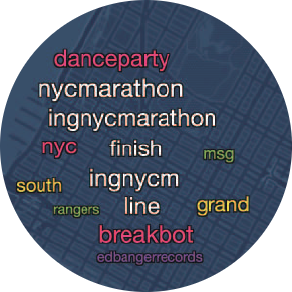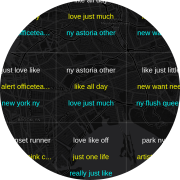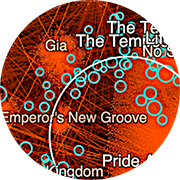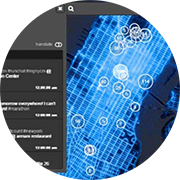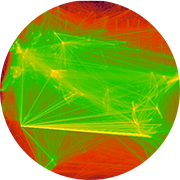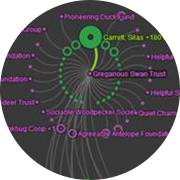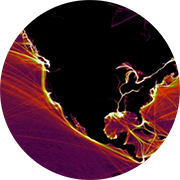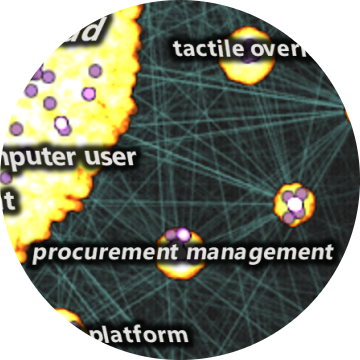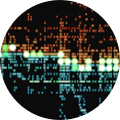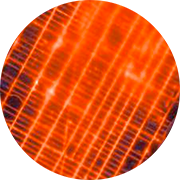Detecting anomalous events of a particular area in a timely manner is an important task. Geo-tagged social media data are useful resources, but the abundance of everyday language in them makes this task still challenging. To address such challenges, we present TopicOnTiles, a visual analytics system that can reveal the information relevant to anomalous events in a multi-level tile-based map interface by using social media data. To this end, we adopt and improve a recently proposed topic modeling method that can extract spatio-temporally exclusive topics corresponding to a particular region and a time point.
Salt

2018
2017
-
We propose herein a novel topic modeling approach on text documents with spatio-temporal information (e.g., when and where a document was published) such as location-based social media data to discover prevalent topics or newly emerging events with respect to an area and a time point. We consider a map view composed of regular grids or tiles with each showing topic keywords from documents of the corresponding region. To this end, we present a tile-based spatio-temporally exclusive topic modeling approach called STExNMF, based on a novel nonnegative matrix factorization (NMF) technique.
2016
-
We present a visual analytics system that supports the geospatiotemporal analysis of social media data based on a large-scale distributed topic modeling technique. Through the analysis of social media data in a given time and region, we can identify critical events in real time. However, it takes significant time to perform such analyses against a large amount of social media data. As a way to handle this issue, we developed an efficient tile-based topic modeling approach, which divides textual data into multiple subsets with respect to different regions and time frames at different zoom levels and applies topic modeling to each subset.
2015
-
Graph visualizations increase the perception of entity relationships in a network. However, as graph size and density increases, readability rapidly diminishes. In this paper, we present a tile-based visual analytic approach that leverages cluster computing to create large-scale, interactive graph visualizations in modern web browsers. Our approach is optimized for analyzing community structure and relationships.
-
In this paper, we present in-progress work on applications of tile-based visual analytics (TBVA) to population pattern of life analysis and geo-temporal event detection. TBVA uses multiresolution data tiling, analytics and layered high-fidelity visualization to enable interactive multi-scale analysis of billions of records in modern web browsers through techniques made familiar by online map services.
2013
-
The widespread use and adoption of web-based geo maps have provided a familiar set of interactions for exploring extremely large geo data spaces and can be applied to similarly large abstract data spaces. Building on these techniques, a tile based visual analytics system (TBVA) was developed that demonstrates interactive visualization for a one billion point Twitter dataset.
-
Visual aggregation techniques, tools and easily tailorable components are needed that will support answering analytical questions with data description, characterization and interaction without loss of information. We present two case studies of prototype implementations of JavaScript browser-based visualization tools leveraging the Louvain clustering algorithm.
-
Our goal is to develop new automated tools to produce effective raw data characterization on extremely large datasets. This paper reports on the development of a web based interactive scatter plot prototype that uses tile-based rendering similar to geographic maps and interaction paradigms.
2017
-
Text analytics have significantly advanced with techniques such as entity extraction and characterization, topic and opinion analysis, and sentiment and emotion extraction. But the visualization of text has advanced much more slowly. Recent visualization techniques for text, however, are providing new capabilities. In this talk we offer an overview of these new ways to organize massive volumes of text, characterize subjects, score synopses, and skim through a lot of documents. Together, these techniques can improve workflows for users focused on documents.
2015
-
Analysts and data scientists work with large amounts of data, but the common approach, which dates back 20 years, is to roll up all the data into summary tables or charts, resulting in loss of detail. In contrast, direct visual exploratory analysis of massive amounts of raw data can yield insights that are otherwise overlooked. Here we highlight high-density visualizations that directly plot hundreds of millions of data points for applications such as market opportunity, periodicity analysis, and anomaly identification.
2014
-
The open source Aperture Tiles provides interactive data exploration with continuous zooming on large scale datasets. By leveraging big data software stacks Hadoop, Apache Spark and HBase for distributed computation and storage, the technique can scale to data sets with billions of data points or more. In this talk we review the Tile-based visual analytic methodology, challenges and highlight some example applications.
